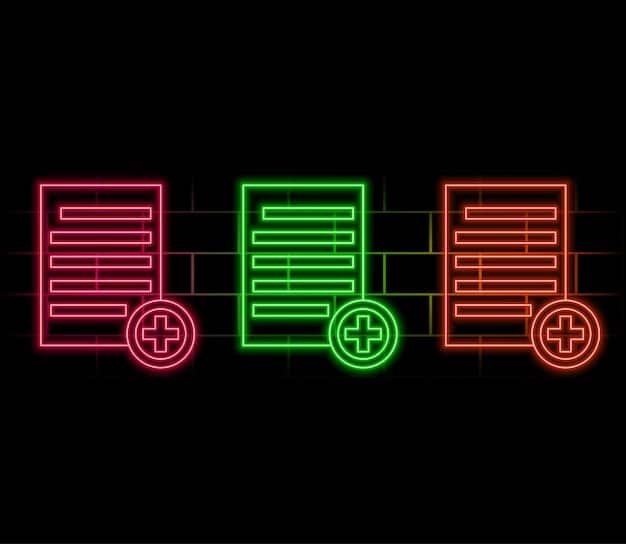Defense Industry Compliance: Navigating Export Control Changes

Navigating defense industry compliance amidst evolving export control regulations demands a proactive, detailed understanding of international agreements, domestic laws, and technological advancements to mitigate risks and ensure operational continuity in a competitive global landscape.
In the dynamic world of national security, staying ahead means not just innovating, but mastering the intricate web of rules governing international trade. Navigating Defense Industry Compliance: How to Navigate the Latest Changes to Export Control Regulations is no small feat, presenting continuous challenges for businesses operating in this critical sector. From sophisticated missile systems to sensitive dual-use technologies, every export transaction is scrutinized, making regulatory adherence paramount for both national security and corporate integrity.
The evolving landscape of export control regulations
The global security environment is in constant flux, driven by geopolitical shifts, emerging technologies, and evolving threats. This fluidity directly impacts the regulatory frameworks governing defense exports. Entities involved in the defense industry must contend with a complex and often overlapping set of international agreements and domestic laws designed to prevent the proliferation of weapons of mass destruction, control the spread of conventional arms, and protect sensitive technologies.
Understanding the fundamental principles underpinning these regulations is the first step toward effective compliance. Key among these are the various multilateral export control regimes. These international agreements aim to harmonize national export control policies, fostering cooperation among member states to prevent undesirable transfers of sensitive items. The Wassenaar Arrangement, for instance, focuses on conventional arms and dual-use goods and technologies, while the Nuclear Suppliers Group addresses nuclear and nuclear-related items.
Key international agreements and their impact
Several international conventions and agreements significantly shape national export control laws. Adherence to these frameworks is often a prerequisite for participation in global defense trade. Over time, these agreements are frequently updated or expanded to address new challenges, such as the rise of intangible technology transfers or the increasing sophistication of cyber warfare capabilities.
- Wassenaar Arrangement: Focuses on conventional arms and dual-use goods and technologies. Its lists are regularly updated, requiring companies to stay informed about changes to controlled items.
- Nuclear Suppliers Group (NSG): Governs the export of nuclear and nuclear-related items, ensuring they are not diverted to non-peaceful purposes. This is crucial for firms dealing with nuclear propulsion or related technologies.
- Australia Group: Aims to counter chemical and biological weapons proliferation by harmonizing export controls on related chemicals, biological agents, and equipment. Relevant for companies developing or handling such materials.
Key US regulations: ITAR and EAR
Domestically, the United States employs two primary regulatory frameworks that govern defense and dual-use exports: the International Traffic in Arms Regulations (ITAR), administered by the Department of State, and the Export Administration Regulations (EAR), administered by the Department of Commerce. These regulations are the bedrock of US compliance for the defense industry and are subject to frequent amendments.
ITAR is specifically designed for military items and services listed on the United States Munitions List (USML), encompassing a broad range of defense articles, technical data, and defense services. EAR, on the other hand, covers dual-use items—commercial items that can have military applications—listed on the Commerce Control List (CCL). Understanding which regulation applies to a specific item or transaction is fundamental, as the compliance obligations differ significantly between the two.
Recent changes have often focused on clarifying the scope of each regulation, streamlining licensing processes, and addressing emerging technologies like artificial intelligence (AI) and quantum computing. Keeping pace with these modifications requires dedicated resources and a robust internal compliance program. Ignoring these updates can lead to severe penalties, including hefty fines, loss of export privileges, and even imprisonment.
The constant evolution of these regulations means that what was compliant yesterday may not be today. Companies must cultivate an environment of continuous learning and adaptation, ensuring that their compliance teams are always up-to-date with the latest pronouncements from the relevant government agencies. This proactive approach not only mitigates risk but also fosters a culture of responsibility within the organization.
In essence, the landscape of export control regulations for the defense industry is a living, breathing entity. Its dynamic nature demands perpetual vigilance, a deep understanding of its intricacies, and a commitment to meticulous compliance. The stakes are too high for anything less.
Understanding recent amendments and their implications

Recent years have seen a flurry of amendments to export control regulations, driven by a confluence of factors including technological advancements, shifting geopolitical alliances, and enhanced national security concerns. These changes are not merely administrative tweaks; they often have profound implications for how defense industry companies operate, innovate, and compete globally. Staying abreast of these amendments is not just good practice, it’s essential for survival and growth.
One significant trend has been the increased focus on foundational technologies and emerging technologies (ETOCs). While traditional export controls focused on tangible defense articles, the digital age has brought to the forefront the critical need to control the transfer of intangible technical data and software that underpin advanced capabilities. This includes areas such as artificial intelligence, quantum computing, additive manufacturing, and biotechnology. Governments are keen to prevent adversaries from acquiring a technological edge through unregulated transfers of these critical innovations.
Impact of ETOCs on classification and licensing
The emphasis on ETOCs has complicated the classification process for many companies. What might once have been considered generic software or research data can now fall under stringent export controls if it has potential military applications. This gray area requires a higher degree of due diligence and often necessitates expert guidance to correctly classify items and determine licensing requirements.
- Expanded Scope: More technologies now fall under export control, requiring companies to reassess their product portfolios.
- New ECCNs: The Commerce Control List (CCL) has introduced new Export Control Classification Numbers (ECCNs) for specific ETOCs, making classification more granular.
- Licensing Challenges: Obtaining licenses for ETOCs can be more complex, often involving interagency review to ensure national security interests are protected.
Geopolitical shifts and sectoral controls
Beyond individual technologies, geopolitical events frequently trigger rapid adjustments to export control policies. Increased tensions with certain nations, or broad sanctions regimes, can lead to new restrictions on specific countries or entire industrial sectors. For instance, the imposition of broad restrictions on certain high-tech sectors in specific countries can drastically alter supply chains and market access for defense contractors.
These sectoral controls often require companies to conduct more rigorous due diligence on their end-users and end-uses, even for transactions that traditionally haven’t attracted high scrutiny. It’s no longer just about what is being exported, but also who is receiving it and for what purpose. This demands a sophisticated understanding of geopolitical dynamics and rapid adaptation to policy shifts.
The implications of these amendments are far-reaching. Companies face increased burdens in terms of compliance costs, time delays in obtaining licenses, and the potential for lost business opportunities if they cannot navigate the new regulatory environment effectively. However, for those who invest in robust compliance programs, these changes can also present opportunities to demonstrate their reliability and secure their position as trusted partners in the global defense ecosystem.
Ultimately, a proactive and adaptive approach to understanding and implementing these recent regulatory amendments is not just a matter of avoiding penalties; it is a strategic imperative for any defense industry firm aiming to thrive in an increasingly complex and regulated global market.
Building a robust export compliance program
In the highly regulated defense industry, a robust export compliance program is not merely a formality; it is an absolute necessity. It serves as the company’s first line of defense against violations, protecting intellectual property, maintaining national security, and safeguarding the organization from severe penalties. A comprehensive program goes beyond just understanding the rules; it embeds compliance into the very fabric of daily operations.
The foundation of any strong compliance program is a clear commitment from senior management. Without top-level buy-in, even the best-designed policies can falter. This commitment should translate into adequate resource allocation, regular training for all relevant personnel, and an unwavering emphasis on ethical conduct. An effective program ensures that every employee, from engineers to sales personnel, understands their role in preventing unauthorized transfers.
Key components of an effective compliance program
An export compliance program should be multifaceted, addressing various aspects of a company’s operations. It typically includes policy development, risk assessment, employee training, internal controls, and regular audits. Each component plays a vital role in creating a comprehensive and resilient compliance framework.
- Policy Development: Create clear, concise, and accessible policies and procedures that reflect current regulations and company-specific operations.
- Risk Assessment: Regularly identify and evaluate potential export control risks across all business units, product lines, and geographic markets.
- Employee Training: Implement ongoing, tailored training programs for all employees involved in export-





